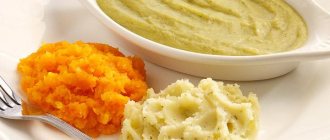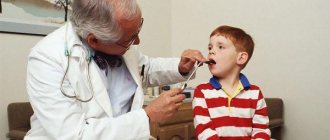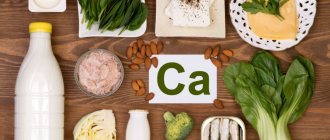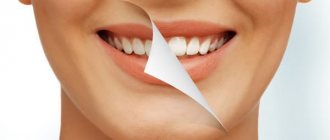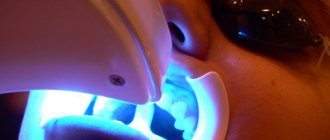Candidiasis is often called thrush and is one of the most common pathologies of the oral cavity. This disease is caused by the fungus Candida albicans.
Activation of the pathogen in the mouth occurs during a period of decreased local or general immunity. The result is increased proliferation of fungus on the cheeks, pharynx or tongue.
In addition to complex therapy prescribed by a specialist after examining the patient, following a diet for candidiasis in the oral cavity gives good results. It must be followed both during the treatment period and after its completion.
Refusal to use prohibited ingredients reduces the risk of exacerbation and helps establish positive dynamics of the pathological process. It also helps reduce the likelihood of relapse due to stress or a slight decrease in the functioning of the immune system.
A balanced diet using approved components provides a high chance of recovery even with a long and advanced pathological process.
Basics of nutrition for thrush
A diet for oral candidiasis, like any other diet, involves dividing all ingredients into two large categories:
- Allowed, which prevent the development of fungus in the mouth and stimulate local and general immunity.
- Prohibited. They create favorable conditions for the growth of the pathogen.
Eating only approved foods together with antifungal drugs enhances the effect of the prescribed course of treatment. It should be noted that the diet is very strict, but the result is noticeable just a few days after starting to follow it. The main goal of the diet is to activate the immune system, due to which the disease recedes much faster.
Symptoms
Infection of the oral mucosa by Candida fungus can take various forms, each of which has its own characteristics of symptoms. The most common forms of the disease are candidal angulitis, glossitis, cheilitis, and stomatitis. There are both acute and chronic forms of the disease.
- Pseudomembranous acute candidiasis is the most common form and most often occurs in infants and the elderly. This form is characterized by the appearance of severe swelling and hyperemia (redness) of the mucous membranes. In addition, a characteristic whitish coating forms on the surface of the lips, palate, back of the tongue and the inside of the cheeks. If the plaque is scraped off, the surface of the mucous membrane underneath will be macerated (softened) or ulcerated and bleeding. In this case, patients complain of pain, burning or itching in the mouth; Eating becomes very difficult. Very often the process spreads to the esophagus and pharynx.
- Acute atrophic candidiasis of the oral mucosa usually develops due to the lack of adequate treatment. The upper part of the mucous membranes (epithelium) is exfoliated, the mucous membrane becomes thin, red or, on the contrary, swollen. The patient’s tongue and the corners of the lips also acquire a bright red color; the papillae on the tongue atrophy and smooth out. The plaque is absent or is found only in hard-to-reach places.
- Hyperplastic chronic candidiasis is characterized by the formation of a large number of papules and plaques of irregular or round shape. They are located close to each other on the mucous membrane of the tongue and cheeks and often become soldered and fused. Around each such formation there is a thin rim of reddened, inflamed tissue. It is difficult to scrape off or otherwise remove such a plaque. The oral cavity becomes dry and rough; When chewing, speaking, and even at rest, patients experience significant discomfort and pain. It should be noted that this disease most often affects men over 30 years of age.
The main cause of the chronic atrophic type is constant injury to the mucous membranes, for example due to wearing a prosthesis. Symptoms of the disease are localized in the affected area. Redness of the mucous membrane occurs (often along the contour of the lesion), plaque forms, pain and burning occur, and the membranes become dry.
Basics of a therapeutic diet
A balanced diet for candidiasis should include components such as:
- Low-fat varieties of fish and meat;
- Vegetables;
- Chicken eggs;
- Buckwheat.
- Products with antifungal effect.
Complex treatment is most effective with proper nutrition. These ingredients should form the basis of the diet. Experts attach great importance to the number of meals, as well as the temperature of the finished dish. The ideal solution would be to avoid salt and various seasonings.
They irritate the oral mucosa, creating a favorable environment for the growth of pathogenic microflora. Steamed or boiled foods are gentle on the oral cavity.
Complication
With timely treatment, candidiasis does not cause any particular harm to health. But the symptoms of candidiasis can cause a lot of discomfort. Long-term, it can lead to damage to other organs, most often the urethra, bladder and kidneys. In particularly severe cases, the progressive disease can affect the reproductive organs, leading to infertility in both men and women. But candidiasis poses the greatest danger to pregnant women, because... the risk of fetal damage is very high.
Prebiotics of natural origin
These components also help to cope with fungus in the oral cavity and increase the effectiveness of treatment. Prebiotics, according to experts, are complex polysaccharides that are not digested by enzymes.
As a result, they become excellent food for intestinal microflora and displace pathogenic microorganisms. Fructose-oligosaccharide is rightfully recognized as one of the most famous polysaccharides. Its maximum content was found in:
- Asparagus;
- Bananas;
- Onions and garlic;
- Jerusalem artichoke.
Introducing the above ingredients into your daily diet will reduce the risk of relapse and speed up the recovery process.
Dish recipes
There are many delicious dishes that can be prepared from products recommended for candidiasis. You should consider recipes for simple first and second courses.
Zucchini pancakes
To make zucchini pancakes you will need the following ingredients:
- young zucchini - 3 pcs.;
- onion - 1 pc.;
- carrots - 1 pc.;
- eggs - 2-3 pcs.;
- greens - a bunch.
Zucchini pancakes are a vegetable dish made from zucchini.
The zucchini is peeled and ground. The pulp is slightly salted and after 15 minutes the released juice is eliminated. Grate the carrots and cut the onion into small cubes. All components are mixed.
Chopped herbs and eggs are added to them. Cutlets are formed from the resulting mixture and fried in olive oil.
Omelette with spinach
Another delicious dish that can be consumed when treating candidiasis is spinach omelette.
To prepare it you will need:
- eggs - 2-3 pcs.;
- milk - 2 tbsp;
- spinach - 80 g.
Spinach omelette is a delicious and quick breakfast option.
First you need to wash and chop the greens. Then fry the spinach for 1-2 minutes in a hot frying pan with olive oil. Combine eggs with milk and beat lightly. After this, pour the mixture into the pan and close the lid. The finished dish can be sprinkled with fresh herbs.
Beet salad
This salad can be prepared quickly if you already have cooked beets. This vegetable must be grated on a coarse grater, and a crushed clove of garlic must be added to the mixture. It is recommended to dress the salad with low-fat sour cream.
Beetroot salad is tasty, healthy and safe for your figure.
Green borscht with sorrel
Among the dishes that are acceptable to eat for candidiasis, such a tasty dish as green borscht stands out.
To prepare it you will need:
- broth - 2.5 l;
- onion - 1 pc.;
- potatoes - 3-4 pcs.;
- carrots - 1 pc.;
- spinach - 1 bunch;
- sorrel - 1 bunch;
- tomato paste - 1-2 tbsp;
- olive oil - 30 g.
Green borscht with sorrel is the first dish that is best prepared in the summer.
The potatoes are peeled and cut into large cubes. The carrots should be grated, the onions should be chopped into small pieces, and the greens should be cut into thin strips.
Potatoes are added to the boiling salted broth. Carrots and onions are lightly fried in vegetable oil. Tomato paste is then added to these vegetables. After 3-5 minutes of simmering, remove the roast from the heat. When the potatoes are almost cooked, frying and chopped herbs are added to the broth. After 10 minutes the dish is ready.
Steam omelette
Steamed omelet is another dish that can be quickly prepared at home.
Steam omelet is a nutritious egg dish.
To do this, break 2 eggs into a container and add 2-3 tbsp to them. milk. Then place the container with the egg mixture in a colander, and place it in the pan so that it does not touch the water poured to the bottom. The omelette should be cooked for 10-15 minutes.
Probiotics for oral candidiasis
Is it possible to consume dairy products if you have thrush? If you follow the recommendations of experts, then yes! The goal of a therapeutic diet is to displace pathogenic microflora and gradually replace it with beneficial microorganisms.
Live yogurt and kefir are recognized as ideal sources of prebiotics. They also have a beneficial effect on the process of normalizing intestinal microflora and improve the digestion process.
Bifidobacteria and acidophilus, which are part of fermented baked milk, have a negative effect on Candida albicans. The use of fermented baked milk as a means of treatment and prevention is very effective. But such a diet should be used with caution in patients with a history of liver disease.
A high content of dairy products in the diet increases the load on the liver and can cause deterioration of the condition. Consultation with a nutritionist and therapist will help you choose their optimal amount in a person’s diet.
Disease prevention
Preventive measures are aimed at improving the condition of the microflora. These include:
- Proper oral hygiene.
- A thoughtful diet with a high amount of protein foods and reduced consumption of foods containing glucose.
- Quitting smoking and alcoholic beverages.
- Timely examination by the attending dentist for the prevention, diagnosis and treatment of the disease.
- Avoid taking medications, such as antibiotics, without first consulting your doctor.
- If the patient has dentures, then one of the preventive measures will be their regular treatment in a special solution.
Sources:
- The role of anti-inflammatory rinse in the treatment of periodontal diseases (L.Yu. Orekhova, A.A. Leontyev, S.B. Ulitovsky) L.Yu. OREKHOVA, Doctor of Medical Sciences, Prof., Head of Department; A.A. LEONTIEV, dentist; S.B. ULITOVSKY, Doctor of Medical Sciences, Prof. Department of Therapeutic Dentistry of St. Petersburg State Medical University named after. acad. I. P. Pavlova
- Report on clinical trials to determine/confirm the preventive properties of commercially produced personal oral hygiene products: mouth rinse "ASEPTA PARODONTAL" - Solution for irrigator." Doctor of Medical Sciences Professor, Honored Doctor of the Russian Federation, Head. Department of Preventive Dentistry S.B. Ulitovsky, doctor-researcher A.A. Leontiev First St. Petersburg State Medical University named after academician I.P. Pavlova, Department of Preventive Dentistry.
- Study of the clinical effectiveness of treatment and prophylactic agents of the Asepta line in the treatment of inflammatory periodontal diseases (A.I. Grudyanov, I.Yu. Aleksandrovskaya, V.Yu. Korzunina) A.I. GRUDYANOV, Doctor of Medical Sciences, Prof., Head of Department I.Yu. ALEXANDROVSKAYA, Ph.D. V.Yu. KORZUNINA, asp. Department of Periodontology, Central Research Institute of Dentistry and Maxillofacial Surgery, Rosmedtekhnologii, Moscow
What not to eat if you have thrush
Following your doctor’s recommendations for a healthy and nutritious diet and comprehensive treatment for oral candidiasis is the key to a speedy recovery. But there is a list of ingredients that must be excluded from your diet.
It is important to carefully ensure that they do not end up on the menu either raw or as part of any complex dishes.
So, you will have to stop using:
- Black tea. There is a possibility of the formation of invisible mold, which will have a detrimental effect on the patient’s health.
- Mushrooms of both forest and industrial origin.
- Buttermilk and sour cream. The only exception is fresh sour cream with a small percentage of fat.
- Mayonnaise, cheese.
- Dried fruits, since their surface may contain tiny mold.
- Drinks obtained on the basis of fermentation. This category includes strong alcohol, wine, beer, cider, kvass, mead, etc.
- Sprouted grains.
- Dishes containing monosodium glutamate. These are ketchups, ready-made wet condiments and soups, various dressings, all types of fast food.
- Vinegar. The only exception is apple.
- Medicines made from yeast. These are antibiotics, vitamin-mineral complexes, etc.
- Products containing refined white flour. This category of dishes includes sweet pastries, buns, cookies, pasta, muesli, etc.
- The ideal solution would be to replace animal fats with plant analogues.
- Sausages, fatty meats, various corned beef.
During the period of exacerbation of the disease, experts recommend excluding these dishes from the diet. Only after complete recovery and completion of the course of treatment should it be gradually introduced, observing the condition of the body. At the first alarming symptoms, it is necessary to contact a specialist in order to adjust the existing diet and continue treatment.
Carbohydrates are prohibited
A strict no-carbohydrate diet has worked well. It involves complete abstinence from foods such as:
- Sugar. It is important to exclude any form of it (honey, sand, condensed milk, refined sugar, syrups, etc.).
- All types of sweeteners (fructose, maltose, glucose, sorbitol).
- Any candy, as well as all types of chocolate.
- Sweet carbonated drinks, as well as packaged and bottled juices.
- Fruits and berries with a high sugar content (watermelon, raspberries, strawberries, bananas, grapes, melons, apples, etc.).
- Dairy products and milk. The only exceptions are fermented baked milk, live yogurt and fresh kefir.
- Vegetables with a high starch content. Potatoes and legumes can be consumed only a couple of times a week in the absence of alarming symptoms and persistent positive dynamics of the pathological process.
A no-carbohydrate diet requires some effort from a person. But after a few days the patient notices an improvement in his condition. By continuing treatment and adhering to the same meal plan, it is possible to obtain lasting positive dynamics.
Menu for oral candidiasis
Fungal diseases require a balanced diet. A proper diet includes a variety of foods. A strict diet does not mean eating just a few ingredients. If desired, you can develop a full menu for every taste. Let's consider possible food options for breakfast, lunch and dinner.
Breakfast for thrush
- Fresh cucumber salad, scrambled eggs, unsweetened green tea and whole grain bread;
- Sour cream and cottage cheese with a small percentage of fat, apple-carrot or carrot juice;
- Freshly squeezed orange juice, omelette;
- Tomato and herb salad, boiled eggs;
- Not sweet green tea and fruit salad in small quantities;
- Assorted nuts and oatmeal without sugar;
- Boiled fish or lean meat;
- Brown rice with boiled fish.
The main thing is to carefully monitor the absence of simple carbohydrates, and also avoid excessive consumption of dairy products.
Afternoon snack or snack
Meals for thrush should be fractional and as healthy as possible. Therefore, experts have developed several healthy snack options that can satisfy hunger and free a person from the desire to eat prohibited foods.
So, what can you snack on during the day:
- Green apple. It can be baked, steamed or fresh.
- A small handful of nuts.
- Live yogurt or kefir.
- Whole grain bread in small quantities, as well as homemade cheese.
- Orange or orange juice.
- Apple with low-fat cottage cheese.
Using the above products to satisfy hunger between main meals, the patient not only follows a diet, but also provides the body with necessary vitamins and minerals. This diet helps to activate the immune system and speed up the healing process.
Dinner
Among the allowed foods for oral thrush, experts include:
- Vegetable soups;
- Casseroles from lean meats;
- Boiled chicken breast and carrot salad;
- Tomato soup;
- Lean fish casserole;
- Pea soup;
- Buckwheat porridge or soup;
- Boiled or steamed vegetables;
- Lentil soup;
- Boiled meat;
- Steam cutlets;
- Beetroot;
- Chicken soup;
- Seafood.
Eating properly selected meals provides a complete diet, and split meals normalize metabolism and promote recovery.
Dinner dishes for oral candidiasis
Nutritionists suggest choosing several dishes for dinner as a tasty and healthy menu:
- Baked (or steamed) vegetables;
- Vegetable stew without seasoning;
- Eggplant cooked with rice;
- Potato roll with vegetables;
- Stuffed cabbage rolls;
- Zucchini or carrot fritters;
- Dumplings with cabbage or potatoes based on rye flour;
- Vegetable Salad.
To make your diet as healthy and effective as possible, you can follow a few simple rules:
- Purchase meat and fish products only from trusted places. Or on farms. Partially or completely replace pork with rabbit and lamb.
- Stop eating fried meat and switch to boiled or stewed foods.
- Introduce quail or turkey meat into your diet.
- Partially replace meat products with chicken or quail eggs.
- Reduce the amount of vegetable fats. Switch to steam or non-stick pan cooking. It is also better to reduce the consumption of animal fats.
- Increase the consumption of homemade fermented baked milk, yogurt, etc.
- Increase the amount of fiber in your diet.
Avoid eating fast food and processed foods. The manufacturer often includes components that are prohibited for you. This reduces to zero all the efforts spent on treating oral candidiasis. Strictly follow the recommendations of specialists, stick to your diet, and then the fight against thrush will be successful!
Diagnostics
To make an accurate diagnosis, a combination of several methods is used - from a simple examination and questioning of the patient for complaints to laboratory methods, such as culture, microscopic examination of biomaterial, analysis of the degree of contamination of the oral cavity with fungal mycelium.
Oral candidiasis is accompanied by a number of characteristic external signs, in particular the formation of plaque, bad breath, ulceration and hyperemia of the mucous membranes. However, laboratory methods make it possible to accurately determine the type of pathogen and exclude the possibility of a secondary infection, which may affect the nature and duration of treatment.
Differential diagnosis is used to separate cases of candidiasis from aphthous stomatitis, leukoplakia, lichen ruber, streptococcal infection and other infectious pathologies of the oral cavity.
Fully or partially limited products
- Products containing additives and preservatives that can disrupt the balance of microflora.
- Eliminate all types of simple carbohydrates and products containing fructose, galactose, sorbitol, glucose, maltose. Fruit juices and sweet fruits should not be consumed.
- Use caution with nuts and dried fruits, which may contain invisible mold, and dried fruits may be high in fructose.
- Products containing yeast (kvass, baked goods and beer) are excluded. It is better not to eat grapefruits, lemons, pineapples, oranges, or tomatoes for a month, as they create an alkaline environment favorable for the growth of fungi.
- You should not consume all products that have an irritating effect: mayonnaise, ketchup, hot seasonings, horseradish, vinegar, mustard, salty and pickled foods, canned food and smoked meats. Mushrooms and blue cheeses are prohibited.
- Avoid fatty pork, duck and goose meat, fatty and smoked fish, and canned fish. Remember that fried foods promote the growth of yeast.
- From drinks you should exclude strong coffee and tea, beer, sweet juices, kvass, sweet water with carbonation and alcohol - all of them are provocateurs of candidiasis infection.
Table of prohibited products
| Proteins, g | Fats, g | Carbohydrates, g | Calories, kcal | |
Vegetables and greens | ||||
| canned vegetables | 1,5 | 0,2 | 5,5 | 30 |
| zucchini | 0,6 | 0,3 | 4,6 | 24 |
| potato | 2,0 | 0,4 | 18,1 | 80 |
| corn | 3,5 | 2,8 | 15,6 | 101 |
| carrot | 1,3 | 0,1 | 6,9 | 32 |
| canned cucumbers | 2,8 | 0,0 | 1,3 | 16 |
| squash | 0,6 | 0,1 | 4,3 | 19 |
| radish | 1,2 | 0,1 | 3,4 | 19 |
| white radish | 1,4 | 0,0 | 4,1 | 21 |
| turnip | 1,5 | 0,1 | 6,2 | 30 |
| beet | 1,5 | 0,1 | 8,8 | 40 |
| canned tomatoes | 1,1 | 0,1 | 3,5 | 20 |
| Jerusalem artichoke | 2,1 | 0,1 | 12,8 | 61 |
| pumpkin | 1,3 | 0,3 | 7,7 | 28 |
| horseradish | 3,2 | 0,4 | 10,5 | 56 |
Fruits | ||||
| avocado | 2,0 | 20,0 | 7,4 | 208 |
| pineapples | 0,4 | 0,2 | 10,6 | 49 |
| oranges | 0,9 | 0,2 | 8,1 | 36 |
| watermelon | 0,6 | 0,1 | 5,8 | 25 |
| pears | 0,4 | 0,3 | 10,9 | 42 |
| melon | 0,6 | 0,3 | 7,4 | 33 |
| figs | 0,7 | 0,2 | 13,7 | 49 |
| tangerines | 0,8 | 0,2 | 7,5 | 33 |
Berries | ||||
| grape | 0,6 | 0,2 | 16,8 | 65 |
Mushrooms | ||||
| mushrooms | 3,5 | 2,0 | 2,5 | 30 |
| marinated mushrooms | 2,2 | 0,4 | 0,0 | 20 |
Nuts and dried fruits | ||||
| raisin | 2,9 | 0,6 | 66,0 | 264 |
| dried apricots | 5,2 | 0,3 | 51,0 | 215 |
| dried apricots | 5,0 | 0,4 | 50,6 | 213 |
| dates | 2,5 | 0,5 | 69,2 | 274 |
Cereals and porridges | ||||
| corn grits | 8,3 | 1,2 | 75,0 | 337 |
| white rice | 6,7 | 0,7 | 78,9 | 344 |
Bakery products | ||||
| bread | 7,5 | 2,1 | 46,4 | 227 |
Confectionery | ||||
| jam | 0,3 | 0,2 | 63,0 | 263 |
| cake | 3,8 | 22,6 | 47,0 | 397 |
Chocolate | ||||
| chocolate | 5,4 | 35,3 | 56,5 | 544 |
Raw materials and seasonings | ||||
| mustard | 5,7 | 6,4 | 22,0 | 162 |
| yeast | 12,7 | 2,7 | 0,0 | 75 |
| ketchup | 1,8 | 1,0 | 22,2 | 93 |
| mayonnaise | 2,4 | 67,0 | 3,9 | 627 |
| honey | 0,8 | 0,0 | 81,5 | 329 |
| sugar | 0,0 | 0,0 | 99,7 | 398 |
| soy sauce | 3,5 | 0,0 | 11,0 | 58 |
| vinegar | 0,0 | 0,0 | 5,0 | 20 |
Dairy | ||||
| milk | 3,2 | 3,6 | 4,8 | 64 |
Meat products | ||||
| pork | 16,0 | 21,6 | 0,0 | 259 |
Bird | ||||
| smoked chicken | 27,5 | 8,2 | 0,0 | 184 |
| duck | 16,5 | 61,2 | 0,0 | 346 |
| smoked duck | 19,0 | 28,4 | 0,0 | 337 |
| goose | 16,1 | 33,3 | 0,0 | 364 |
Fish and seafood | ||||
| smoked fish | 26,8 | 9,9 | 0,0 | 196 |
Alcoholic drinks | ||||
| beer | 0,3 | 0,0 | 4,6 | 42 |
Non-alcoholic drinks | ||||
| cola | 0,0 | 0,0 | 10,4 | 42 |
| coffee | 0,2 | 0,0 | 0,3 | 2 |
| lemonade | 0,0 | 0,0 | 6,4 | 26 |
| Pepsi | 0,0 | 0,0 | 8,7 | 38 |
| sprite | 0,1 | 0,0 | 7,0 | 29 |
| black tea | 20,0 | 5,1 | 6,9 | 152 |
Juices and compotes | ||||
| apricot juice | 0,9 | 0,1 | 9,0 | 38 |
| Orange juice | 0,9 | 0,2 | 8,1 | 36 |
| * data is per 100 g of product | ||||
Reviews and results
Elena, 28 years old, St. Petersburg: “Since I was 16 years old, I often suffer from candidiasis.
I was treated many times with antifungal agents, but it only helped for a while. I started following a diet. Relapse rates have decreased." Tatyana, 32 years old, Belgorod: “After the birth of my first child, I encountered thrush for the first time. On the doctor's recommendation, she was treated with antifungal agents. The result was, the symptoms disappeared. However, after 6 months the disease reappeared. On the advice of a specialist, she began to follow a gentle diet and underwent a course of drug treatment. There have been no relapses for a year now.”
Medical recommendations and reviews from doctors
Svetlana, 42 years old, Rostov-on-Don: “Working as a gynecologist, I always recommend that patients suffering from thrush, in addition to drug treatment, follow a gentle diet.
This helps to quickly suppress fungal activity and eliminate symptoms.” Irina, 38 years old, Moscow: “As a nutritionist for candidiasis, I often advise patients to follow a gentle diet. Proper selection of foods and their preparation increases immunity and reduces the risk of recurrent disease.” [media=
https://youtu.be/pFPvt5mzfzA
]
